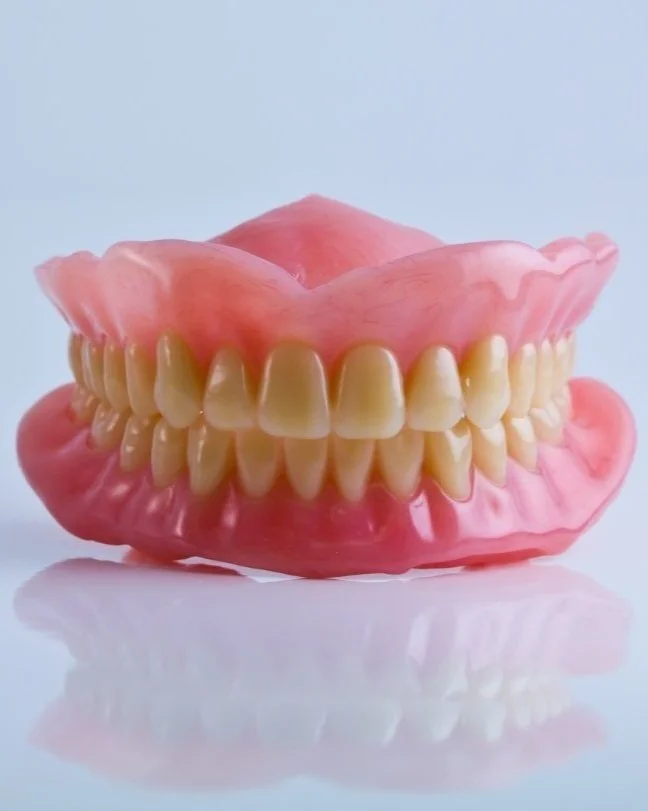Drilling by Fire (part 2)
We eventually progressed to treating real people. We began with dentures – on toothless patients - where we couldn’t inflict permanent damage. If the denture didn’t fit, the patient could simply toss it into a junk drawer. Wendy got to work alone, but everyone else had a partner.
When a tooth is extracted, the bone holding it in shrinks, nature’s way of eliminating the unnecessary. Dentures stay put by whatever residual bone is left. In severe cases, there is no bone and it’s just a flat surface. On the lower jaw, the denture sloshes around the tongue like a boat around a buoy, making chewing painful and impossible.
The lower denture is every dentist’s nightmare.
My partner and I were friends. “Let’s do rock, paper, scissors for the upper,” he said.
Our patient, now in her seventies, was twenty-one when all her healthy teeth were pulled. This had been a gift to her, relieving Mrs. Cord of the financial and physical burdens of teeth. It wasn’t true, though, and she, like many others, suffered greatly. Her only solace was getting a new denture every ten years, like pretty shoes that hurt her feet.
Even before examining her mouth, we knew we were in trouble when Mrs. Cord said, “I usually take out the bottoms when I eat.” Instead of getting graded separately for our respective upper or lower denture, we got permission to be evaluated as a unit.
It was not unusual for people to voluntarily have all their teeth removed at a young age. Not only did this ensure an attractive smile, but it also avoided painful toothaches and future dental expenses.
In the 19th and early 20th century, dentures were considered an ideal wedding gift for the young bride.
Mrs. Cord came in every week for two months. We pulled and stretched her lips. We smudged her face with difficult to remove compounds and once I even got some ZOE paste stuck in her hair. When it came to picking teeth, we first chose huge horse teeth that clacked when she repeated “sixty-six.” Then we overcompensated with teeth so small that Mrs. Cord’s lips looked like a goldfish trying to say, “fifty-five.”
We finally presented her with teeth where she could actually speak, ones that matched the size of her mouth. She gushed, “Look, my wrinkles are gone.” She regifted us a can of cashews that one of her grandchildren had given her. “Silly boy. He takes for granted I can enjoy these.” Her “s” sounded perfect.
She was making us feel better. I only wish I could have reciprocated and given her something more than window dressing to support her sagging skin and fill in her wrinkles.
Mrs. Cord’s denture was the first of the laundry list of requirements I had to fulfill. Since UCLA was located in an affluent area, there wasn’t much demand for discount dentistry – and fierce competition ensued. We students saw patients as procedures rather than people, saying things like, “Oh my crown is coming in today.”



